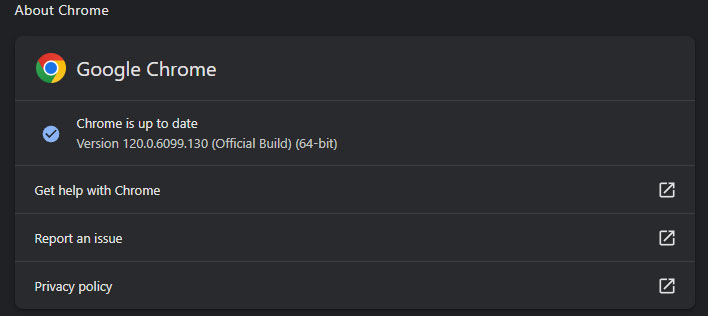Google is adding some new bells and whistles to Chrome on the desktop that could potentially make the world's most popular browser a bit faster and
more secure. While these are not necessarily game-changing alterations, they're significant enough that you may want to initiate a manual update rather than waiting for Chrome to automatically fetch and install the latest build.
One of the changes is a more personalized and proactive Safety Check feature. When updating to the latest build, the Safety Check feature will run automatically behind the scenes and alert you if one of your saved
passwords has been compromised. It also looks for potentially harmful extensions and pings you if any site permissions you have saved need attention.
"We’re also extending Safety Check to revoke sites' permissions—like access to your location or microphone—if you haven't visited them in a long time. And Safety Check will now flag if you’re getting a lot of notifications from sites you don’t engage with that much, so you can easily disable them," Google explains in a blog post.
On the performance side of things, Google continues in its efforts to address Chrome's reputation as a memory hog by expanding on its Memory Saver mode that was
introduced last year. The latest trick, if you will, is the ability to quickly glance how much memory a tab is feasting on simply by hovering over it. Likewise, this lets you know how much memory could be saved when a tab goes inactive.
Note that you can see how much memory tabs are using whether you have Memory Saver turned on or off. To check (and/or change the setting), click the three vertical dots in the upper-right corner of Chrome and navigate to Settings > Performance. The Memory Saver toggle should be up top. Additionally, the same section in Settings lets you add sites that you want to always stay active.
Finally,
Google says over the next few weeks it plans to roll out the ability to saved tab groups for faster access on other desktop devices. This will make it easier to pick back up where you left off when going from one device to another.
The latest Chrome desktop build (for Windows) at the time of this writing is 120.0.6099.130. Chrome is good about fetching updates on its own, but you can initiate the process by clicking the aforementioned vertical dots and navigating to Help > About Google Chrome.



